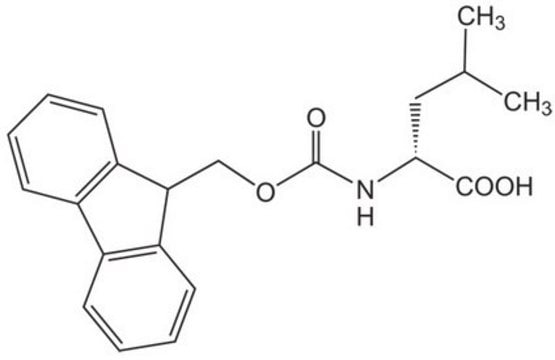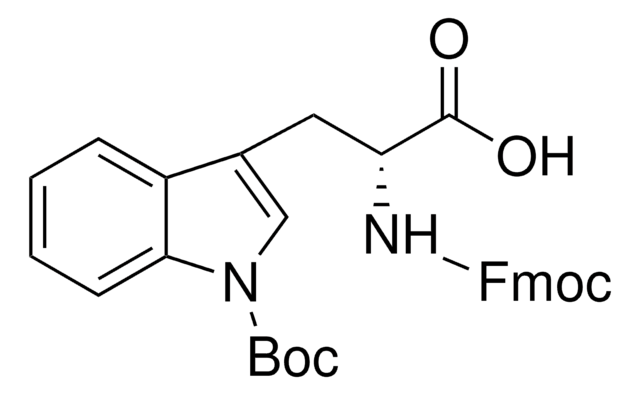Alle Fotos(1)
Wichtige Dokumente
47508
Fmoc-D-Ala-OH
≥98.0% (HPLC)
Synonym(e):
Fmoc-D-alanin
Anmeldenzur Ansicht organisationsspezifischer und vertraglich vereinbarter Preise
Alle Fotos(1)
About This Item
Empirische Formel (Hill-System):
C18H17NO4
CAS-Nummer:
Molekulargewicht:
311.33
Beilstein:
8025133
MDL-Nummer:
UNSPSC-Code:
12352200
PubChem Substanz-ID:
Empfohlene Produkte
Assay
≥98.0% (HPLC)
Optische Aktivität
[α]20/D +18.5±1°, c = 1% in DMF
Anwendung(en)
peptide synthesis
Funktionelle Gruppe
Fmoc
Lagertemp.
2-8°C
SMILES String
C[C@@H](NC(=O)OCC1c2ccccc2-c3ccccc13)C(O)=O
InChI
1S/C18H17NO4/c1-11(17(20)21)19-18(22)23-10-16-14-8-4-2-6-12(14)13-7-3-5-9-15(13)16/h2-9,11,16H,10H2,1H3,(H,19,22)(H,20,21)/t11-/m1/s1
InChIKey
QWXZOFZKSQXPDC-LLVKDONJSA-N
Lagerklassenschlüssel
11 - Combustible Solids
WGK
WGK 3
Flammpunkt (°F)
Not applicable
Flammpunkt (°C)
Not applicable
Persönliche Schutzausrüstung
Eyeshields, Gloves, type N95 (US)
Hier finden Sie alle aktuellen Versionen:
Besitzen Sie dieses Produkt bereits?
In der Dokumentenbibliothek finden Sie die Dokumentation zu den Produkten, die Sie kürzlich erworben haben.
Kunden haben sich ebenfalls angesehen
Jeffrey A Schneider et al.
Nature communications, 9(1), 4396-4396 (2018-10-26)
New chemical inhibitors of protein-protein interactions are needed to propel advances in molecular pharmacology. Peptoids are peptidomimetic oligomers with the capability to inhibit protein-protein interactions by mimicking protein secondary structure motifs. Here we report the in silico design of a
Si Chen et al.
Biomaterials, 117, 92-104 (2016-12-13)
In this work, mitochondria-targeting gold nanostar (AuNS) and anticarcinogen DOX were co-encapsulated in hyaluronic acid (HA) protective shell for tumor-targeting synergistic photothermal/chemo-therapy. Cationic peptide R
Fayçal Touti et al.
Nature chemical biology, 15(4), 410-418 (2019-03-20)
The use of competitive inhibitors to disrupt protein-protein interactions (PPIs) holds great promise for the treatment of disease. However, the discovery of high-affinity inhibitors can be a challenge. Here we report a platform for improving the affinity of peptide-based PPI
Andreas Pech et al.
Nucleic acids research, 45(7), 3997-4005 (2017-02-06)
Biological evolution resulted in a homochiral world in which nucleic acids consist exclusively of d-nucleotides and proteins made by ribosomal translation of l-amino acids. From the perspective of synthetic biology, however, particularly anabolic enzymes that could build the mirror-image counterparts
Unser Team von Wissenschaftlern verfügt über Erfahrung in allen Forschungsbereichen einschließlich Life Science, Materialwissenschaften, chemischer Synthese, Chromatographie, Analytik und vielen mehr..
Setzen Sie sich mit dem technischen Dienst in Verbindung.












